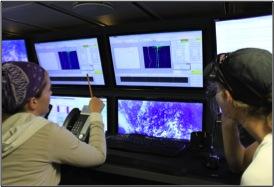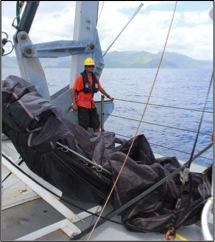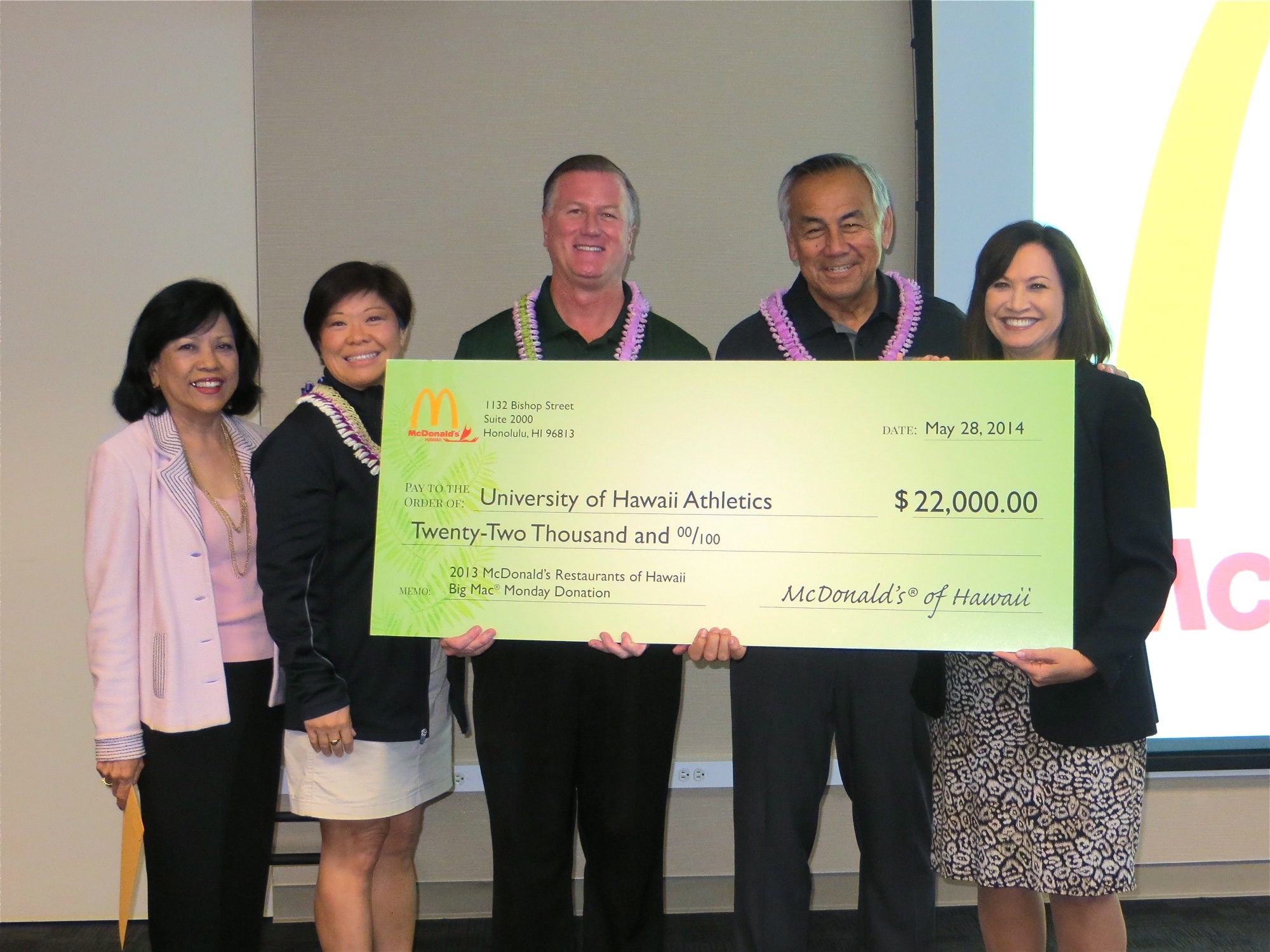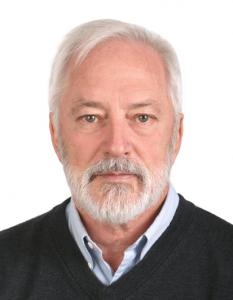By Staff Reports
(Honolulu)– On Thursday, June 19, 2014, University of Hawai‘i marine science students returned from the last of three research expeditions aboard Schmidt Ocean Institute’s R/V Falkor. The group sailed to Station ALOHA, a long-term ocean sampling site 60 miles north of O‘ahu. The 11 students on this past cruise makes a total of 58 UH students (graduates and undergraduates) who have had an opportunity to learn and train onboard the R/V Falkor in 2014.
Most of this third student group’s research at Station ALOHA (A Long-term Oligotrophic Habitat Assessment) focused on small crustaceans known as copepods. Collecting this data can be expensive, labor-intensive, and requires a lot of training that is often limited in availability to marine students. Some of the student projects looked at the grazing habits of copepod larvae — a critical component in ocean nutrient cycling — while others explored fluorescence in copepods and copepod paternity. The students developed new methods for their research and gathered new information about the little-known zooplankton.
Chief scientist and assistant professor Dr. Erica Goetze shared her enthusiasm about the expedition and the training given to the student teams. “It was wonderful to watch everyone work together: the students, postdoctoral students, and the Schmidt Ocean Institute team. The data collected on this expedition will serve as a foundation for multiple PhD dissertations and research projects,” Goetze said.
One of the ways scientists onboard collected copepods was with a special sampling system called the MOCNESS (Multiple Opening and Closing Net with Environmental Sensing System). The ten plankton nets on this instrument were deployed twice each day at Station ALOHA, and towed through the water column collecting microscopic plankton.
What makes this cruise even more unique is the varied career levels of scientists that were onboard. While student research projects were the focus of the expedition, Dr. Brian Taylor, UH Mānoa Dean of the School of Ocean and Earth Science and Technology (SOEST), joined the cruise to map the seafloor at the Kaiwi Channel between the islands of O‘ahu and Molokaʻi. This project gave students onboard an excellent opportunity to observe Schmidt Ocean Institute’s state-of-the-art high-resolution seafloor mapping sonar systems that were recently used to map 35% of the Papahanaumokuakea Marine National Monument.
Said Taylor, “I am happy to share this experience with the students onboard. These expeditions have allowed students to walk away with a whole new skill set that they will be able to apply to their own research and future oceanography work.”
Schmidt Ocean Institute leaves the Port of Honolulu again for Loihi Seamount off Hawai‘i Island on June 25, on a research cruise led by SOEST’s Dr. Brian Glazer focused on iron-eating bacteria at this undersea volcano. This will be the last Schmidt Ocean Institute research cruise in Hawai‘i for 2014. For more on Schmidt Ocean Institute or future research expeditions, see www.schmditocean.org.
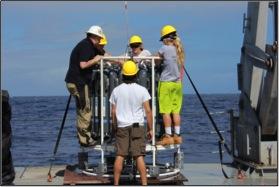
SIO crew assist students in preparing the CTD rosette sampler for deployment. Credit: C.Wiener, SIO.
Schmidt Ocean Institute Schmidt Ocean Institute was created by Eric and Wendy Schmidt in 2009 to enable research that expands understanding of the world’s ocean using advanced technology, intelligent observation, and the open sharing of information. Based on a peer review proposal process, the organization invites select scientific teams from around the world to conduct collaborative research at no cost aboard its 272-foot research vessel, Falkor, launched in 2012. For more information please visit www.schmidtocean.org.
The School of Ocean and Earth Science and Technology The School of Ocean and Earth Science and Technology at the University of Hawai‘i at Mānoa was established by the Board of Regents of the University of Hawai‘i in 1988 in recognition of the need to realign and further strengthen the excellent education and research resources available within the University. SOEST brings together four academic departments, three research institutes, several federal cooperative programs, and support facilities of the highest quality in the nation to meet challenges in the ocean, earth and planetary sciences and technologies. www.soest.hawaii.edu

